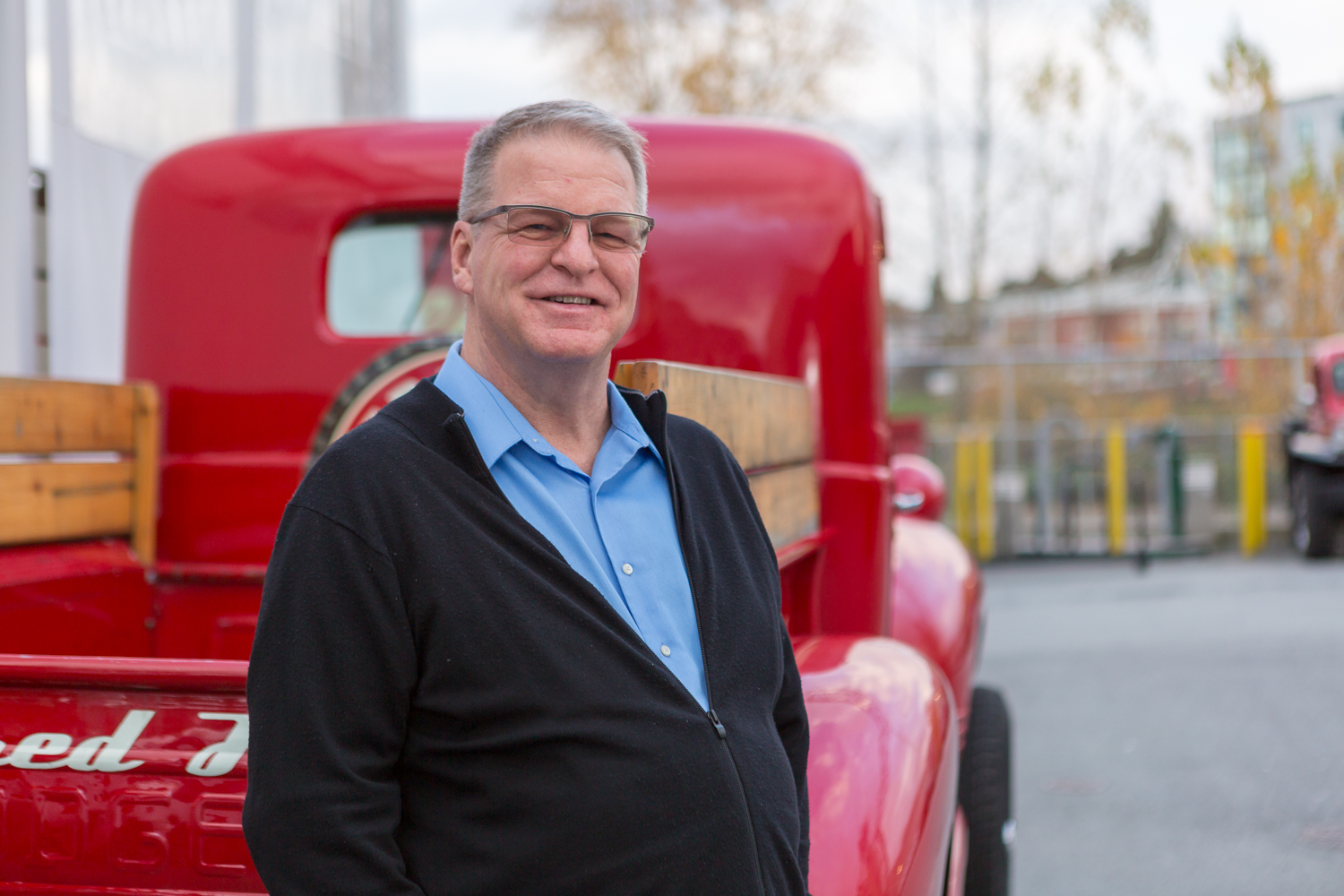
A Guilded Existence: The Career of Ken Beattie, Part II
In Part I of our biography, the kid from Marpole grew up to run some of the biggest sales territories in Canada for Molson and Sleeman. His career path is set for life until, after a quarter century, he’s downsized and out of the industry.
Here’s how, in the space of a year, he gets back in the saddle with a new purpose: leading the charge for the BC craft breweries taking a big bite out of Big Beer.
During his twelve years with Sleeman Brewing, Ken Beattie had attained the type of position that he had envisioned rising to as a young man with Molson. But after 25 years in the industry and at the age of 50, with two kids aged 10 and 12, there would be no going back to the Met Hotel. This time, he knew he had to reinvent himself.
The first thing the family did after receiving the severance package was something the family had pre-planned but in hindsight didn’t help: take off to Hawaii for three weeks. Once he got back into town and got his head together, he started to reach out and get some career advice.
Job search professionals told Ken he had to work in “beverage alcohol” the rest of his life, because that’s what he always did. It wasn’t a question of “what do you want to do?” It was “do you want to sell spirits, wine or beer?” Hardly inspiring.
Ken freely admits that the industry had been everything to him to that point. “It was good to me and my family, but I was looking for something else,” he remembers. Still, he kept getting the message that he was pigeonholed, and a career change wasn’t in the cards.
One sunny day, travelling on the SeaBus from his North Shore home to a downtown Vancouver job-search coaching appointment, he saw the gleaming building housing Simon Fraser University’s downtown campus on the opposite shore. Ken had attended SFU in his twenties, and was two electives short of graduating with a diploma in Media and Communications, with a minor in Sociology, when he accepted a full-time job offer with Molson. He had planned to go back and finish up, but 25 years of life got in the way.
Something twigged as Ken reflected on this, and right then and there he knew what he was going to do. When he stepped off the ferry, he went straight to SFU and requested his quarter-century-old transcript. Upon arriving at his appointment with the job counsellor, he shocked her by declaring he was going back to school. The prodigal student completed his two remaining courses at night school, earning his diploma (Ken now has BA in Applied Science), and demonstrating to his two children that it’s never too late.
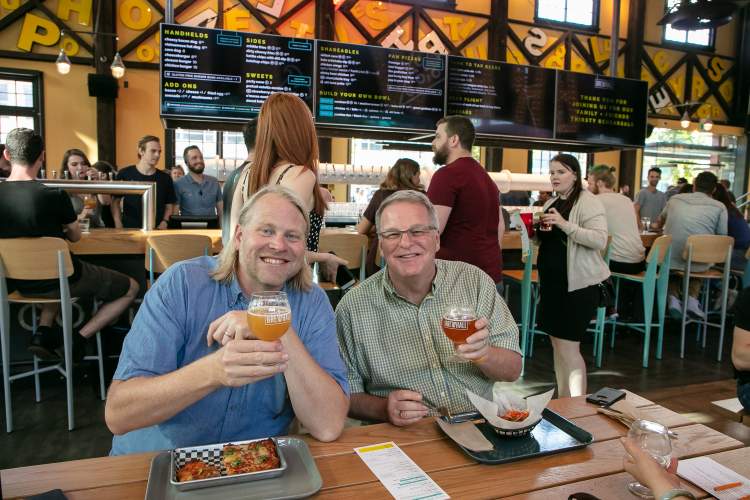
The Beginnings of Awareness
Back in his college days, one of Ken’s long-term goals had been to go into in business in some way. With a lifetime of sales and marketing experience, Ken had accomplished that—just not for himself. Along the way though, aside from all the mastery of negotiations and numbers, Ken had unexpectedly begun developing another attribute that would lead to his next career move. He had a palate for beer.
When Ken worked at Molson, his job was to sell lifestyle. You never talked about the product. But counter to what the company would likely prefer, he was always trying the competition’s beers, especially the occasional new and interesting ones from smaller companies.
In the late 1980s, there wasn’t much to choose from, but the beer that first really turned him on was Shaftebury Brewing’s Cream Ale. At the time, Shaftebury was a start-up East Van brewery well before any of those around today. He’d walk into one of his accounts and spot their tap on the row. “Hey, is that that Shaftebury Cream Ale? I’ve heard of that!”, went the opening volley. “Yeah, you want to try it?” “Sure!” He’d do that all up and down his line of pubs.
A taste for beer—in the sense of quality, not just quantity—wasn’t required for employment at Molson, which marketed primarily on lifestyle. Later, working in Sleeman’s Okanagan Spring Brewing division, Ken found it a little more balanced; the marketing wasn’t purely “I Am Canadian”-style hype. Around that time, “There was some regulatory stuff. We had to figure out how to sell beer without discounting it”, Beattie recalls.
As one of the Big Three in Canada by that time, Sleeman was coming into direct competition with Molson and Labatt. Ken liked the business spin Sleeman was able to put forward without using payola: how much more can Sleeman make you over your Molson, because you can charge more for it. The budget tricks no longer mattered. Ken thought, “it should be about what’s coming in over the bar, not what’s coming in the back door.”
Ken recalls that when Sleeman took on Unibroue, “That was a game changer. It was all about the liquid, not the lifestyle.” The reps and managers would require some training to handle this strange new Belgian-influenced product from Quebec.
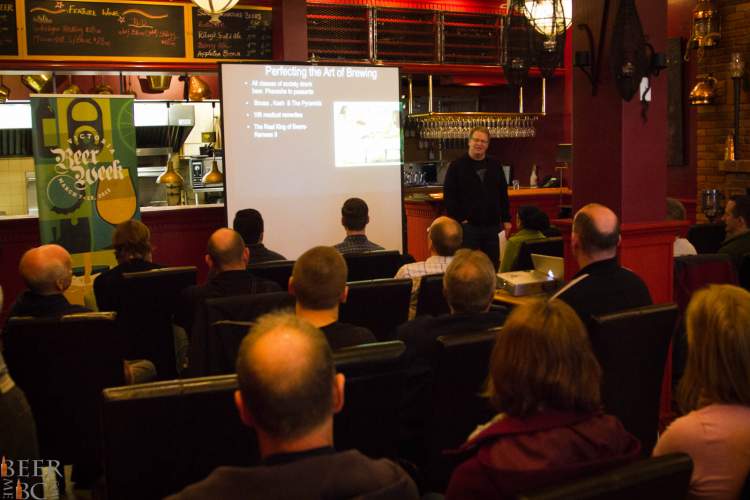
The Birth of Eureka Beer Guide
Back in 1997, Roger Mittag left his career at Interbrew Canada (Oland, Labatt, etc.) and founded a company called Thirst for Knowledge. He set up a beer sommelier program called Prud’homme Beer Certification, billed as the first comprehensive online beer education program in the world (the Chicago-based Cicerone Certification Program debuted a decade later).
Sleeman was one of Mittag’s clients, so he provided some basic training to the people in Okanagan Spring, and helped handle the Unibroue coaching. “I was enthralled by this guy’s presentation,” recalls Beattie. “When I first saw Roger teach, before the first coffee break, it was like, this is unbelievable. How have I been in this industry so long, and I know so little about this? I was an old dog learning a new trick, and I completely embraced it.”
Mittag said, ‘I know what happened, and I’ve been waiting for you to call.’
It’s apparent in hindsight that Ken at Sleeman was one of Roger’s best students. They weren’t close friends, but there was some kind of connection, because after Ken lost his job, he reached out to the beer sommelier.
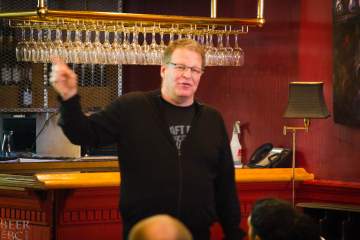
“We had never talked about him expanding his business out here, but we just got along,” Beattie relates. “I called Roger to let him know [about the career change]. Roger says, ‘I know what happened, and I’ve been waiting for you to call.'” Eerie. But before long, Ken became certified as a Prud’homme Beer Educator, and became Mittag’s Western Canadian representative.
His new company was called Eureka Beer Guide, an homage to the moment of epiphany so many craft beer enthusiasts have experienced when they realize that beer—something they’ve been drinking for years—doesn’t all have to taste the same. Beer education made sense to Ken once he realized he liked presenting seminars and sharing the information he’d learned. It represented a new direction, and a new investment of time, energy, and expense.
But Ken’s new life as a self-employed entrepreneur had its drawbacks. Beattie understates that trying to make a living as a beer educator was “tough sledding” compared to his comfortable income at Sleeman. As he confessed, “I probably took a 75-80% hit in wage in the first year.” That meant no holidays for the family that year. But the Beattie family included two kids, and their lifestyle wasn’t going to completely change, which meant expenses for things like hockey and dance. Ken spent a year working away at this new project, all the while knowing its limitations and keeping the big picture in mind.
Starting Over, Part II
One day in early 2013, Beattie put in a sales call to Don Gordon, at the time National Sales Manager for Whistler Brewing. Ken knew Don well because back in the day, Don (with Big Rock) and Ken (with Sleeman) competed in the Kitsilano territory daily. Now Whistler was a division of Northam Beverages, and a perfect candidate for Prud’homme training.
Don didn’t necessarily take Ken up on the education front. It was a hard sell. But it turns out that before too long there was another reason for Ken to talk to Don that was more conventionally profitable.
Whistler’s BC Sales Manager Megan McKay Hall was about to go on maternity leave. Ken had been putting a lot of work into Eureka but was feeling the effects of leaving corporate life, so he considered covering Megan’s beat to supplement his income.
I sit on the board of the Craft Brewers Guild,” said Don.
“What’s that?” responded Ken.
Ken figured the job involved what are known as “key accounts,” meaning only the cream of the crop business relationships, not your garden variety pubs and hole-in-the-wall bars. Ken thought, “hey, no problem, I can do that”: dealing with head offices, not “in the trade” out at some bar at 11:30 at night. By then, Ken was in his fifties and no longer interested in being “that guy.” He reached out to Whistler again and talked to Don about covering the beat.
Don knew Ken had the chops to handle any sales territory, but he instantly assessed the situation and realized Beattie had made a mistake. Before the conversation went any further, he asked, “Did Megan tell you about the other 50 accounts she has?” Ken didn’t know. Don did. “She has Granville Street, your old territory. She has the f**king Roxy.” Ken’s face turned white.
Don Gordon knew that dialling back the clock 20 years was not in the cards for Ken and wasn’t about to let him take Megan’s beat. Fortunately, he had something better up his sleeve for the struggling beer educator.
“I sit on the board of the Craft Brewers Guild,” said Don. “What’s that?” responded Ken.
Don, taken aback, busted Beattie’s chops for being a BC craft beer educator and yet not knowing about the Guild. Then he explained: “Do you remember the CBA?” Yes, Ken knew what that was.
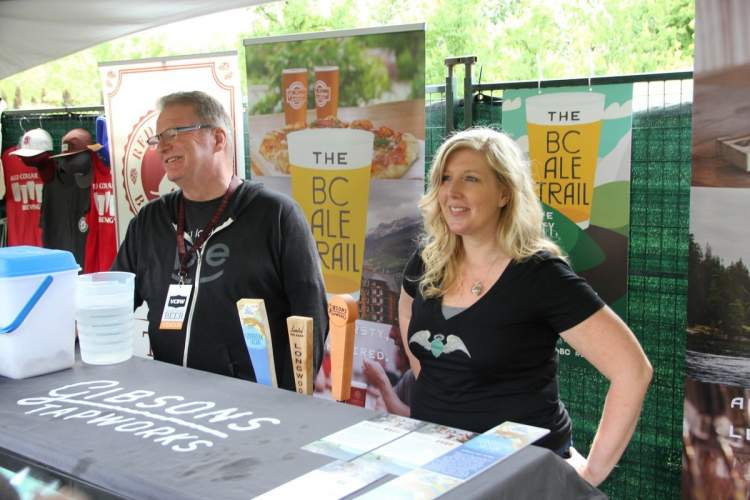
Finally: The Perfect Match
Back in June 1993, What’s Brewing reported that six smallish breweries were forming an industry group known as the Micro Brewers Association of BC, with Mark Simpson, Granville Island Brewing’s classic brewmaster, as the founding chair. As we wrote then, conspicuous by their absence from the MBABC’s expected founding membership was Okanagan Spring, which, according to Simpson in 1993, no longer considered itself a microbrewery. By the following year, the fledgling MBABC was up and running with just over 3.5% of the BC beer market. By around the turn of the century, the organization would rebrand to use a cutting-edge new term: Craft Brewers Association of BC.
In 1996, John Sleeman set out to create a cross-Canada brewing empire. His first step was to purchase that same “not a micro” Okanagan Spring Brewery in little Vernon, BC. In 1999, he acquired former Beattie favourite and MBABC/CBA member Shaftebury. In 2000, Ken Beattie was hired by Okanagan Spring, and therefore Sleeman, as part of their BC sales team. Ken ultimately became aware of the little industry group these formerly small, independent Sleeman divisions had been associated with. That’s how he came to know what the CBA was.
By the time Beattie called Don Gordon in spring 2013, the Association had just rebranded again to adopt a term used by others similar groups across North America: they were now known as the BC Craft Brewers Guild. And they were looking for a new Director.
As Don described the Guild and the potential position he had in mind, Ken asked, “Does this job pay money?” Don’s response: “It pays part-time.” Ken asked whether the Guild would have a problem with him continuing to pursue Eureka at the same time. That was exactly what Don had in mind; it was the beer education aspect, along with the industry experience, that convinced him Ken was the man for the job.
Ken took the position of Executive Director with the Guild in July 2013, at a pivotal moment in BC beer history.
At that point, the Guild’s priority was to consolidate its membership base and drive new growth. A new website was commissioned with a more sophisticated appearance. A mix pack of BC beers was marketed in Ontario to try to give certain members some exposure there. More significantly, they also had a plan to engage a political lobbyist because there were rumours of an upcoming major liquor policy review that could affect and benefit BC microbreweries.
The liquor policy review happened, but under a different political regime than anticipated during Ken’s call with Don. Before the 2013 provincial election, all the pundits felt certain that, after years of BC Liberal rule, the NDP were about to take back power. But later that Spring, Christy Clark pulled off a stunning victory that gave the Liberals one more kick at the can, and they began working on the liquor review that autumn.
Former Minister of Multiculturalism John Yap was drafted into a new position called Parliamentary Secretary for Liquor Policy and began assessing how BC law could be brought into the modern post-prohibition era, following a path that US jurisdictions like Oregon had been down much earlier. The changes that the Yap Review eventually recommended paved the way for the adoption of the brewery tasting room model and opened the door to a new generation of small beer manufacturers. A golden age dawned in BC beer.
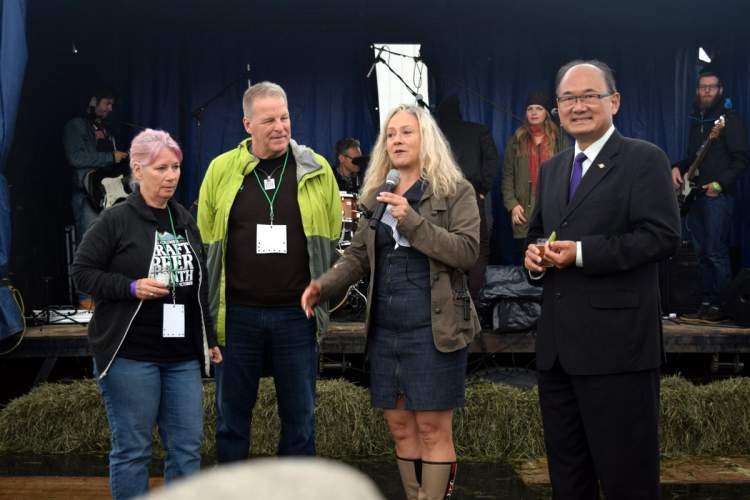
A Tsunami of Change
After being hired, Ken got the opportunity to meet the Guild’s members en-masse in September 2013 during Great Canadian Beer Festival weekend in Victoria, upstairs at Vancouver Island Brewing.
“I walked around the first day of the festival and told people to come to the meeting the next day. People had no idea who I was,” Beattie relates. The previous leaders of the Craft Brewers Association had been from the craft beer community, and he wasn’t. “I stood up in front of a hung-over room and said, ‘I worked at Molson and Sleeman and Okanagan Spring. But I’m not the Antichrist.’”
2013 was an amazing time to take on leadership of BC’s craft beer sector. “You couldn’t have dreamed it up better,” Beattie says. “We hit a tsunami of love.”
The Guild did indeed engage the planned lobbyist, a person by the name of Craig Jangula who worked with Ken to develop his relationships and contacts within industry and government. As part of trying to effect change, Beattie began to learn “government speak.” Working alongside Jangula helped, because as Beattie notes, it’s not just about knowing the people the public have heard of; in order to pull strings: “You need to know who the Assistant Deputy Minister’s secretary is.”
The Guild gained momentum very quickly. “I spent the first 18 months raising my hand and begging people to talk to us,” Beattie relates. “Eighteen months later, we were picking and choosing who we would talk to and the projects we would support.”
What makes the Guild important to government leaders? “We’re a job creation machine,” Beattie explains. “We’re in 60 communities across the province. So, it’s not just one area. Wine is pretty much in certain regions only; high tech might be concentrated in certain areas. Beer is everywhere around the province, creating jobs.” To government, jobs are key to the economic success of the province, and so Ken found out to his surprise that “five jobs at a brewery in Valemount is a really big deal to [former Minister of Jobs] Shirley Bond.”
Within a couple of years, Beattie’s “part-time” job had become his full-time occupation, and the Eureka effort was more and more a fond memory.
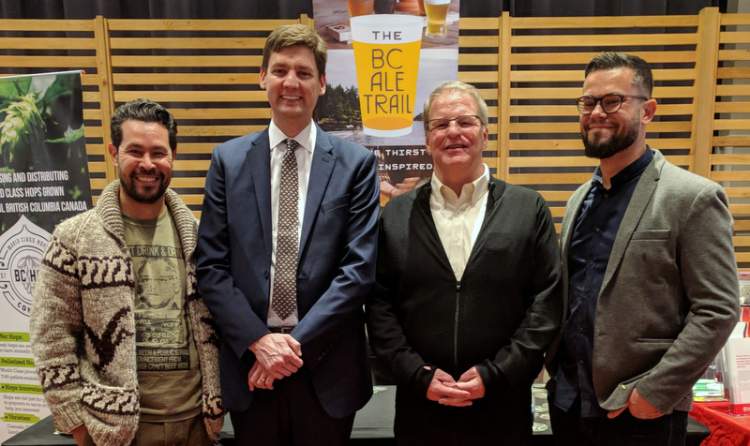
Looking Back
What made Ken the right person to head the Guild? “I worked day to day in the business for 25 years, so I come from the perspective of someone in the industry,” he says. “The street is a fight. Whether you work for big breweries or small breweries, the ability to sell and market and promote your beer is the same. The strategy of figuring out how to get a [wholesale] listing: I’ve lived and breathed that my whole career.”
By the time Beattie got to his current position, craft breweries—the “weeds in the garden” his former boss at Molson had threatened to pull out—were spreading violently and starting to affect the cash crops that Big Beer had relied on for so long. “[Craft beer’s] market share was 11% when I came on board, and that included Pacific Western,” he recalls. “Now our market share is over 25% without PW. That’s the strongest in Canada. But still, that means 75% of the market is drinking something else.”
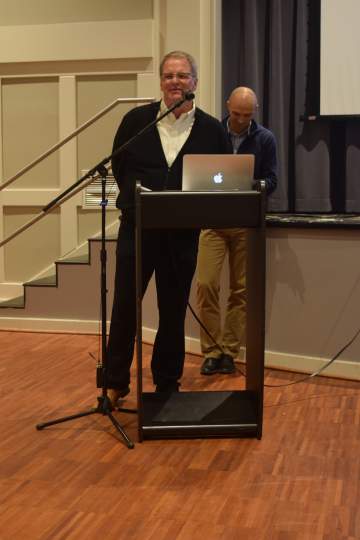
Ken, who used to sneak pints of Shaftebury while on the beat for Molson, likes this underdog aspect. He enjoys watching the growth happening in craft beer. “This is a real legacy time. People will talk about what happened since 2000. When Matt (Phillips) decided he was all in, he kind of pushed things over the edge. Suddenly, the snowball started to happen. I’m not selling the beer anymore, but I’m watching craft beer do that.”
How else have things changed since he started out? “Back in the day, we weren’t fighting over 60 taps [at certain taphouses]. You couldn’t always get draft beer everywhere; we were fighting for two taps, four taps. This place (our interview was held at Darby’s Pub in Kitsilano, one of Beattie’s old accounts) used to have just four taps. So, people’s perception of what they want has expanded, and the taps have expanded along with that.”
How would Ken compare what we have in BC with other regions? Last year, he said, “I was just in Halifax [for the Canadian Brewing Awards & Conference]. It’s got a good scene. But it’s not like walking down Powell Street and around East Van. It’s not like Brewer’s Row. Two breweries in Smithers. Three in Sooke. The concentration [in some parts of BC] is crazy, and so is the expansion.”
He attributes this to the sense of community that breweries deliver in their individual communities around BC. “They’re community hubs,” he opines. “I’m not going to the coffee shop, I’ll meet you at the brewery now. Just by virtue of how they’re set up and the rules around them. Long tables. No TVs. No table service. If forces people to interact, to share.”
He draws up a hypothetical tasting room scenario. “A conversation starts between a local and a visitor from out of town. They tell each other what they’re drinking. They get to know each other. Advice and tips are shared: “Hey, don’t go to such and such tourist attraction. Everybody goes there. Go here instead.” This type of thing happens a thousand times around the province every day. From a big brewery point of view: you can’t compete against that.”
Talking about his competition—people who do what he used to do—he confides, “I can’t imagine what a Big Beer rep does in Kits these days. How do they compete? What do they do all day?” He shares a recent anecdote. “I happened to have lunch with one of them the other day. He used to work for me. We’re at Parallel 49 on a Tuesday afternoon. We look around at all the young mothers that are there every weekday. P49 jokes that they’re going to have to get a stroller valet. I say to him, ‘Dude. You’ll never beat this. Ever.’”
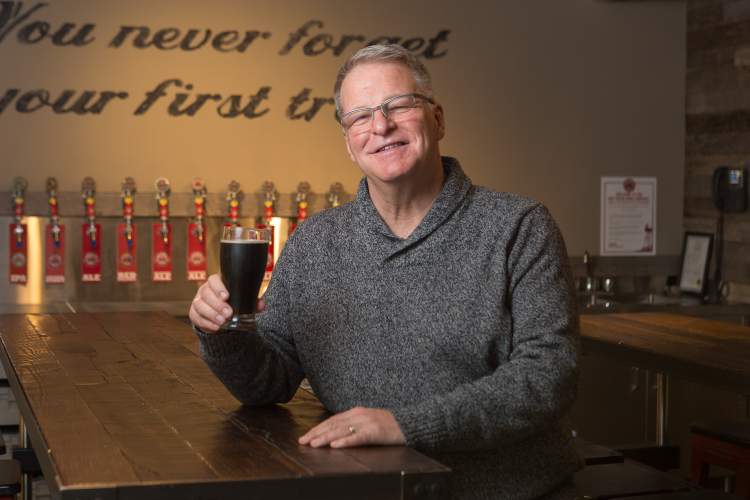
This Post Has 0 Comments